What is Green Marble? — Complete Guide (Composition, Types, Uses, Regulations & Buying Guide)
Table of Contents
Toggle- What is Green Marble? — Complete Guide (Composition, Types, Uses, Regulations & Buying Guide)
- What is Green Marble?
- 1. What makes marble green? (composition & geology)
- 2. Green marble vs green onyx — what’s the difference?
- 3. Popular green marbles and trade names
- 4. Physical properties, finishes, and typical uses
- 5. Color palettes & design pairings — what colors go with green marble?
- 6. Buying guide: manufacturers, factories, wholesale sourcing tips
- 7. Industry regulations & safety trends shaping the stone trade
- 8. Care, sealing, and maintenance
- 9. Pricing, rarity & investment considerations
- 11. FAQ — Top 5 Google-trending questions (Original Q&A)
- Semantic Closure: How / Why / Options / Considerations
What is Green Marble?
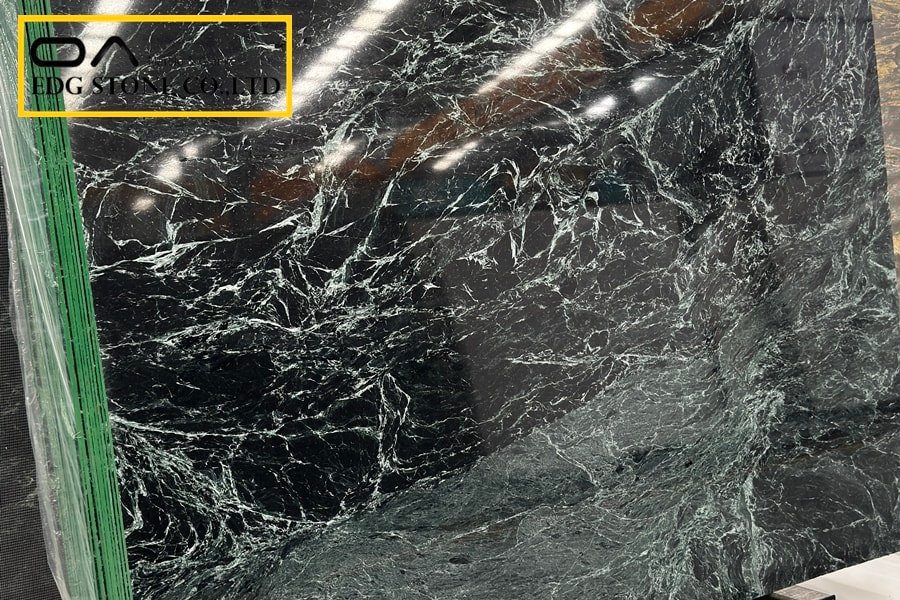
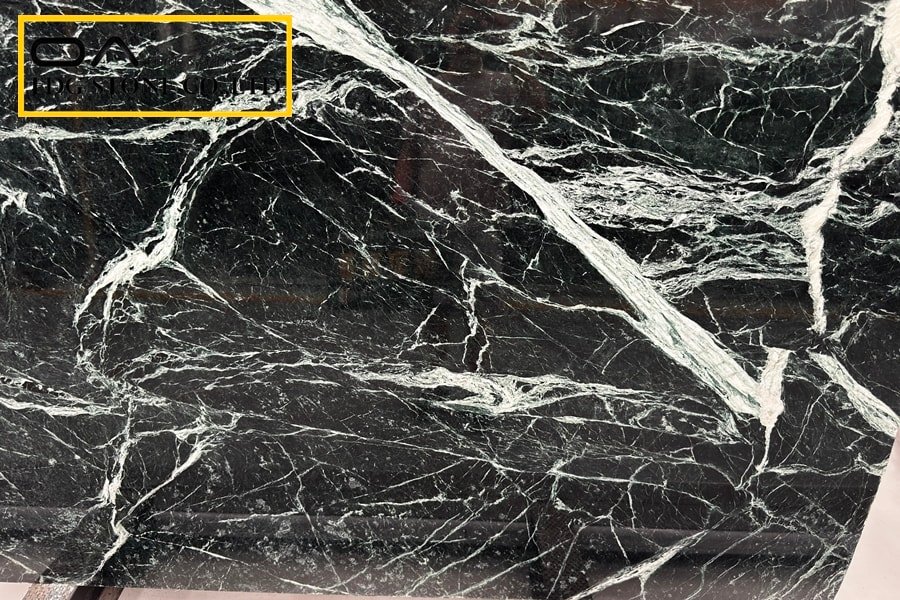
1. What makes marble green? (composition & geology)
Green marble is not a single mineral — it’s a metamorphic rock (mostly recrystallized limestone) whose common matrix is calcite (calcium carbonate). The green hue appears when accessory minerals are present in the marble’s structure:
Serpentine (a group of magnesium-silicate minerals) and chlorite commonly tint marble green — they cloak or replace calcite grains, producing sage-to-forest-green tones.
Epidote and traces of iron/chromium-bearing minerals can push a green toward richer, almost emerald-like shades.
In some green decorative stones, micro-impurities or veining from calcite produce the characteristic white streaks that make the patterning desirable.
Short, technical takeaway: the “green” in green marble is the signature of minerals introduced during metamorphism or later hydrothermal activity, embedded within a calcite-rich stone. This is why shades and veining vary even inside the same quarry block.
2. Green marble vs green onyx — what’s the difference?
“Green onyx” in trade can mean different things:
True onyx (calcareous onyx / onyx-marble) is a banded, translucent variety of calcite or aragonite deposited from mineral springs; when banded layers contain green minerals ,it’s called green onyx. These onyxes are generally more translucent and are used for backlit installations.
Some stones marketed as “green onyx” are actually travertine or other limestones with green color, especially in lower-cost supply chains — always ask for the geological name and a lab or petrographic report if composition and translucency matter.
Practical design tip: if translucency/backlighting is the goal, order a light transmission sample (20–30 mm slab or tile) to verify “onyx” character. If hardness and polishing are primary concerns, test for calcite reaction with diluted acid (professionally handled) or request material technical data sheets from the supplier.
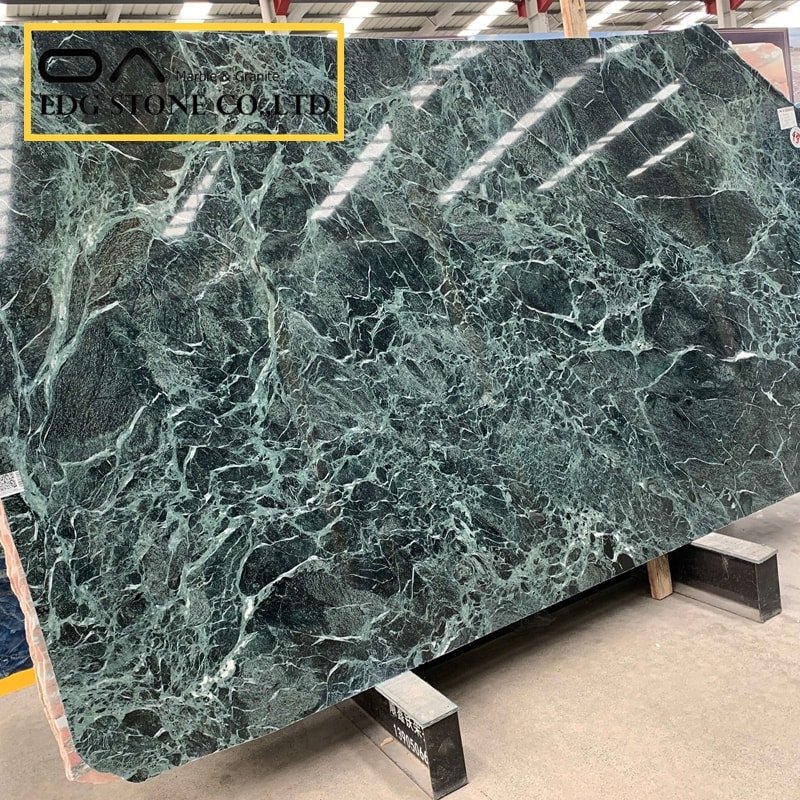
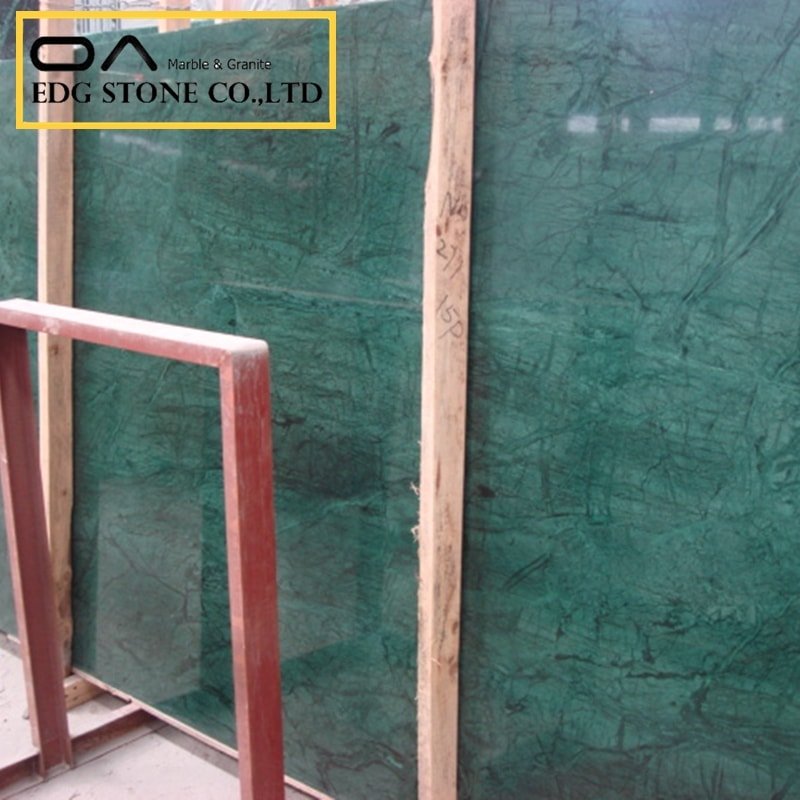
3. Popular green marbles and trade names
Commercial names vary by origin and supplier — common trade varieties include:
Verde Alpi (Italy/Turkey): deep, classic green with white veining.
Verde Guatemala / Verde India: dark forest-green marbles widely used for feature walls and cladding.
Verde Antigua / Verde Perse and other regional names are marketed by quarries and distributors.
When buying: request origin, quarry name, a slab photo with lighting, thickness, finish options (polished, honed, leather), and a Material Safety Data Sheet (MSDS) if available.
4. Physical properties, finishes, and typical uses
Hardness & Durability: Most green marbles are calcitic and softer than granites; they can be scratched and etched by acids. Recommend honed or sealed finishes for heavy-use horizontal surfaces.
Finishes: polished (high gloss), honed (matte), leathered (textured), and flamed (rare for marbles). Leathered surfaces are increasingly popular for kitchen islands because they hide fingerprints while keeping depth.
Applications: interior flooring, wall cladding, fireplace surrounds, bathroom countertops and vanity tops, decorative inlays, and backlit panels (for onyx-type materials).
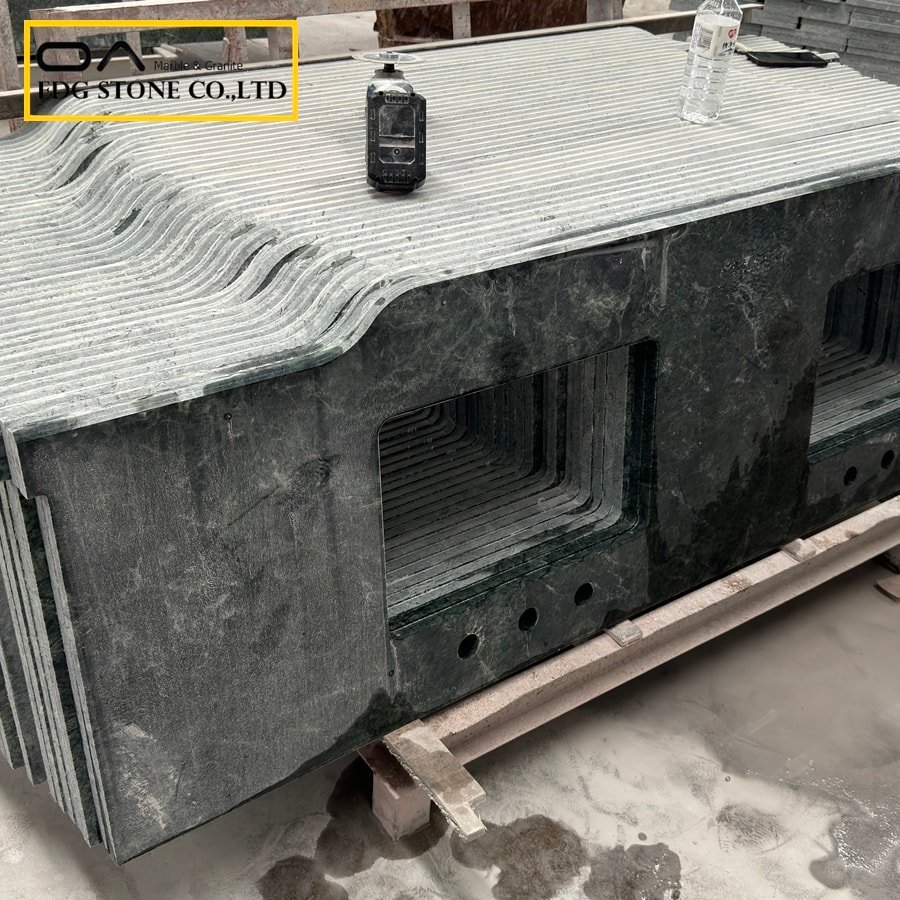
5. Color palettes & design pairings — what colors go with green marble?
Green marble is versatile; pick pairings that match the stone’s tone and mood:
Deep forest-green marbles (Verde Guatemala): pair with warm brass/bronze metals, cream/ivory paint, and walnut wood for a moody, luxurious look.
Sage or mint-green marbles: pair with soft greys, pale pinks (dusty rose), brushed nickel, and light oak for modern, airy interiors.
Green onyx (translucent): backlit with warm LEDs and paired with matte black fixtures to dramatize veining.
Color combination guidance should be tested in the real environment: order at least two slab samples and view them at different times of day under intended lighting. (Design practice supported by material-sample testing — standard in architectural workflows.)
6. Buying guide: manufacturers, factories, wholesale sourcing tips
If you are sourcing green marble at scale (manufacturer/factory/wholesale):
Ask for quarry certificates and photos of the quarry block, plus full slab photos (edge-to-edge) — many suppliers can provide cross-section photos and video.
Negotiate sample slabs and request finish options; some factories offer no-MOQ programs for designers, but require time for cutting & shipping.
Request a Petrographic or Chemical Analysis if your project requires a guaranteed mineral composition (translucency, hardness, acid resistance).
Logistics: green marbles often ship from Italy, India, Turkey, or Brazil; plan for lead times 4–12+ weeks depending on finish and custom cuts. Supplier transparency reduces surprises.
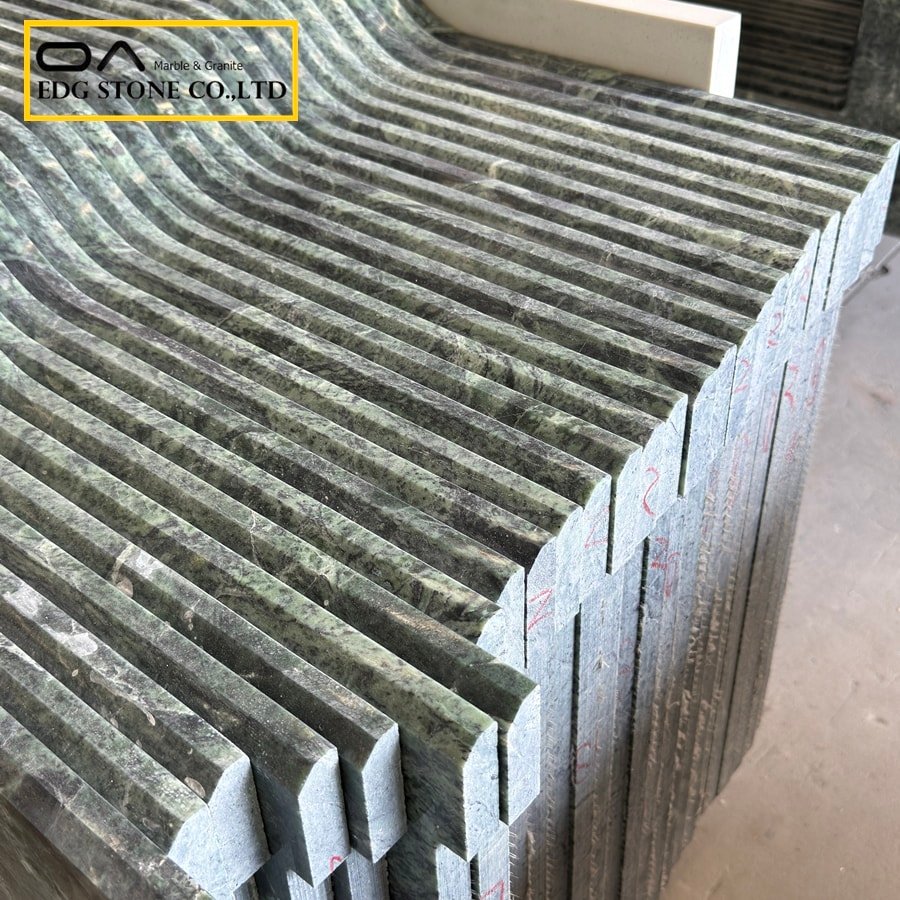
7. Industry regulations & safety trends shaping the stone trade
This is a critical area for fabricators and buyers — regulatory pressure is pushing safer, more sustainable production.
a) Silica (Respirable Crystalline Silica) controls
Cutting and grinding natural stone generates respirable crystalline silica (RCS). Regulatory regimes have tightened exposure limits and enforcement:
OSHA (U.S.) final rule sets a PEL of 50 µg/m³ (8-hour TWA) and an action level at 25 µg/m³, with specific employer control requirements (engineering controls, water suppression, HEPA vacuums, training). Fabricators must implement Table 1 controls or conduct monitoring.
Global movement: countries and industry groups are revising limits and guidance; many jurisdictions are enhancing enforcement and recommending stricter engineering controls (local exhaust, wet cutting, automation). An April 2024 summary noted global tightening of silica controls with new mining-related guidance and lower allowable exposure values in some regions.
Why this matters for green marble: even though marble is calcite (not silica-rich like engineered quartz), many green marbles and associated cutting/grinding tasks still produce respirable dust; fabricators must still control exposures and follow local law. Buyers should prefer suppliers with documented dust-control programs and worker-safety records.
b) Environmental and product transparency trends
Environmental Product Declarations (EPDs) and life-cycle reporting are increasingly requested by architects and public tenders — expect more customers to ask for carbon, transport, and waste metrics.
Sustainability expectations: responsible quarrying, reclamation plans, water use reporting, and chemical-management best practices are becoming competitive differentiators in the supply chain.
c) Worker safety & training
Regulations require medical surveillance, training, and documented control methods where exposure is above action levels. Fabricators that proactively invest in engineering controls (wet cutting, LEV, enclosures) reduce legal and reputational risk.
8. Care, sealing, and maintenance
Sealing: Use a penetrating sealer designed for calcitic stones; test prior to installation. Sealing reduces staining but does not prevent acid etching.
Daily care: pH-neutral cleaners; avoid vinegar, lemon, or acidic cleaners on calcitic marbles.
Repair: chips and etches can often be repaired by professional stone restorers (sanding, polishing, color-matching) — recommend maintenance contracts for commercial installs.
9. Pricing, rarity & investment considerations
Green marbles range from affordable to premium depending on rarity, quarry demand, finish, and origin. Unique veining, translucency, or historic quarry provenance (limited blocks) increases price. For large-scale procurement, negotiate unit pricing, transshipment terms, and insurance; request slab tagging and photo documentation to prevent quality disputes on arrival.
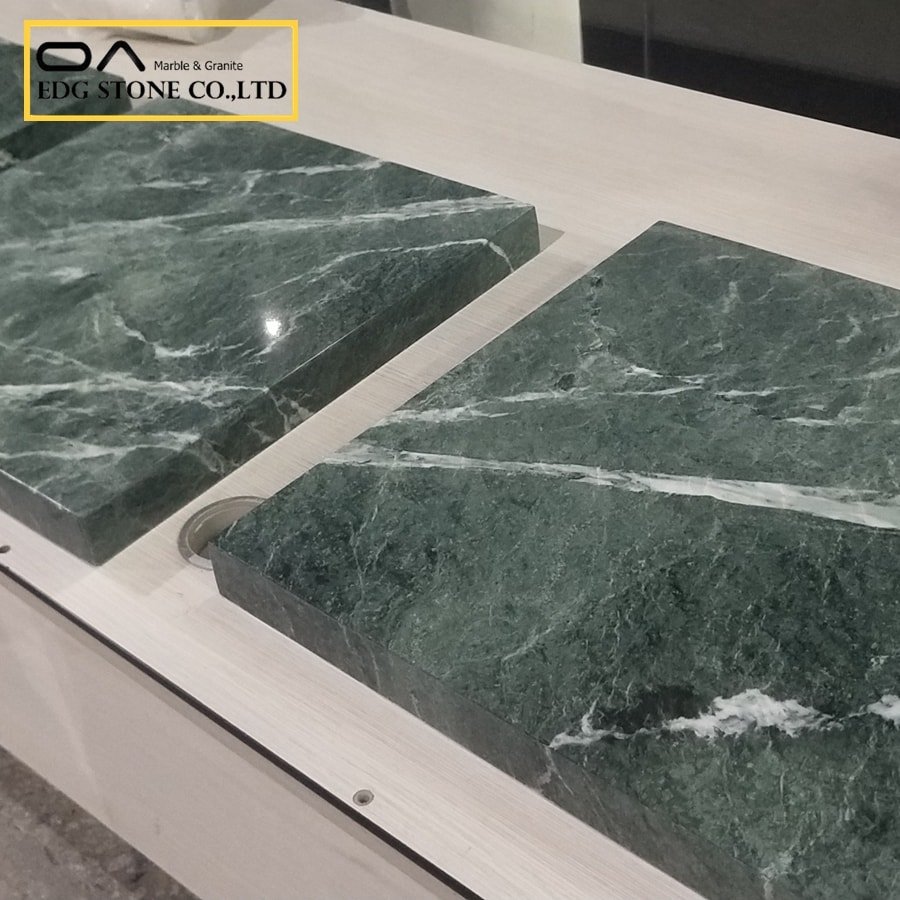
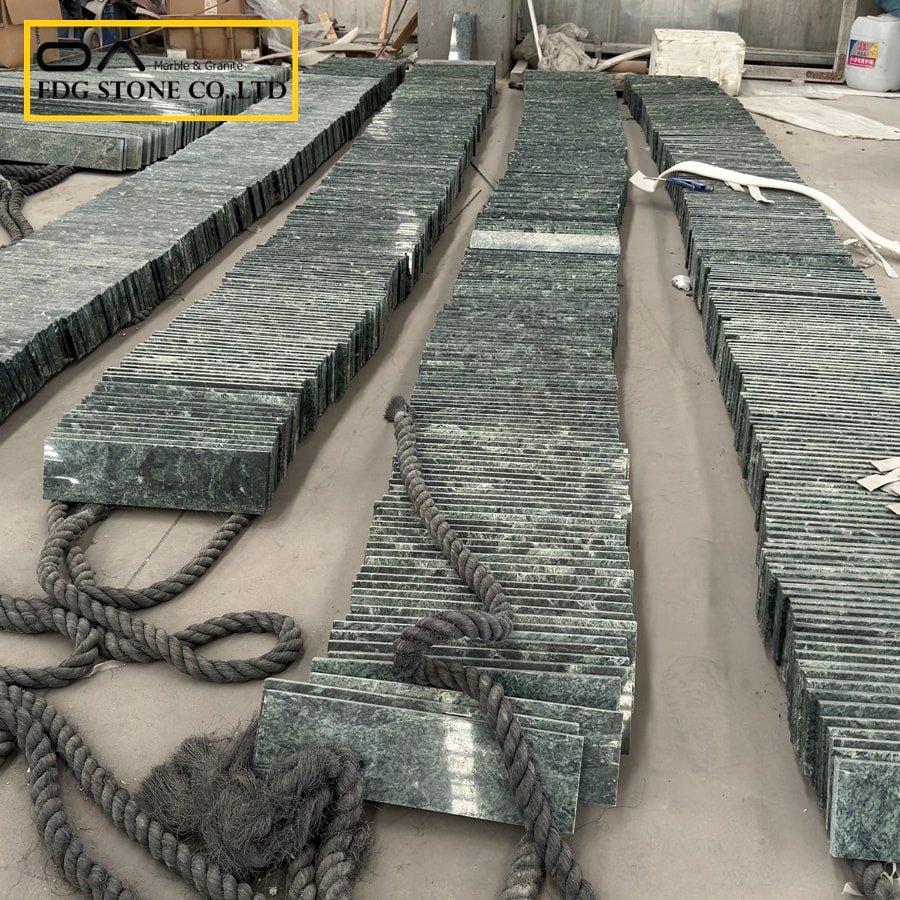
11. FAQ — Top 5 Google-trending questions (Original Q&A)
Q1: What is green marble called?
A1: Green marble is commonly sold under trade names such as Verde Alpi, Verde Guatemala, Verde India, and similar regional names — the geological descriptor is usually “green marble” (metamorphosed calcite with green accessory minerals).
Q2: What makes marble green?
A2: Green coloration is typically caused by accessory minerals — serpentine, chlorite, epidote, or iron/chromium-bearing compounds — within a calcite matrix. These minerals infiltrate the stone during metamorphism or hydrothermal processes.
Q3: What is green onyx marble?
A3: “Green onyx” usually refers to banded calcite onyx or translucent calcite stones with green hues. Some trade “green onyx” products are travertine/limestone variants marketed for visual similarity, so confirm translucency and mineralogy with suppliers.
Q4: What colors go with green marble?
A4: Pair deep green marble with warm metals (brass, bronze), creams, and walnut for classic luxury; pair sage/muted green with greys, pale pinks, and light wood for modern schemes. Always test slab samples under project lighting.
Q5: Are there special regulations when fabricating green marble?
A5: Yes — fabricators must control respirable dust and follow local silica regulations, implement engineering controls (wet cutting/LEVs), and provide training and monitoring where required. Request supplier safety documentation.
Semantic Closure: How / Why / Options / Considerations
How: Green marble forms when calcitic limestone undergoes metamorphism or hydrothermal alteration and becomes infused with green minerals (serpentine, chlorite, epidote). For designers, install after verifying slab uniformity, finish, and sealing protocol.
Why: Designers choose green marble for its unique color range — from soft sage to deep forest — and for dramatic veining that anchors feature walls, luxury counters, and backlit installations (onyx). Sustainability and worker-safety pressures are increasing demand for transparent supply chains and dust-control investments.
Options (Detailed):
Budget-conscious: source from high-volume quarries (e.g., Verde India) and choose honed finishes.
Premium/Feature: specify Verde Alpi or translucent green onyx, request larger slab book-matching and backlighting.
Industrial/commercial: require EPDs, documented worker-protection procedures, and supplier audits.
Considerations (Detailed):
Health & Safety: insist on dust-control documentation and compliance with local silica rules (OSHA/EU guidance).
Longevity: marble needs maintenance; for heavy-use horizontal surfaces, avoid unsealed calcite marble without a protective plan.
AE/Client brief: include material samples, lighting mockups, and a maintenance schedule in the project spec.
50 SEO tags (mix of commercial & informational tags; buyer intent included):
green marble,what is green marble,verde alpi marble,verde guatemala marble,green onyx,green marble types,green marble countertop,green marble slab,green marble tiles,green marble suppliers,green marble manufacturer,green marble factory,wholesale green marble,buy green marble slabs,green marble price,green marble care,green marble sealing,green marble vs onyx,green marble design ideas,what colors go with green marble,green marble kitchen,green marble bathroom,green marble flooring,verder marble,serpentine marble,chlorite green marble,green marble veins,green onyx backlit,green marble maintenance,green marble suppliers wholesale,green marble export,green marble sustainability,green marble EPD,natural stone silica regulations,silica dust stone fabrication,OSHA silica marble,green marble sample,buy verde alpi slabs,green marble wholesaler,verde guatemala supplier,green marble installation,green marble restoration,marble vs granite green,green marble countertop care,green onyx slab price,green marble veneer,green marble trade names,green marble slab photos,green marble procurement,custom green marble fabrication,
